Selected References:
- Chanda, S, et al. 2006. Developmental toxicity study of pure trans-capsaicin in rats and rabbits. Int.J.Toxicol; 25(3):205-217.
- Cooper RL, Cooper MM. 1993. Red pepper-induced dermatitis in breast-fed infants. Dermatology; 193:61-2.
- Cordell GA, Araujo OE. 1993. Capsaicin: identification, nomenclature, and pharmacotherapy. Ann Pharmacother; 27(3):330-336.
- Karlsen K, et al. 2021. Problematic use of capsaicin patches as pain relief during labour. Moller AT. Ugeskr Laeger. 183(19):V11200815.
- Kirby ML et al. 1982. Effects of prenatal capsaicin treatment on fetal spontaneous activity, opiate receptor binding and acid phosphatases in the spinal cord. Exp Neurol; 76:298-308.
- Muralidhara, Narasimhamurthy K. 1988. Non-mutagenicity of capsaicin in albino mice. Food Chem Toxicol; 26:955-8.
- Murphy LM, et al. 2023. A pilot randomized control trial of topical capsaicin as adjunctive therapy for nausea and vomiting of pregnancy. Am J Obstet Gynecol MFM. 5(5):100997.
- Nance DM, et al. 1987 Neuroendocrine and behavioral effects of intrathecal capsaicin in adult female rats. Brain Res Bull; 18(1):109-114.
- No author. 2007. Final report on the safety assessment of capsicum annuum extract, capsicum annuum fruit extract, capsicum annuum resin, capsicum annuum fruit powder, capsicum frutescens fruit, capsicum frutescens fruit extract, capsicum frutescens resin, and capsaicin. Int J Toxicol; 26 Suppl 1:3-106.
- Perfumi M, Sparapassi L. 1999. Rat offspring treated prenatally with capsaicin do not show some of the irreversible effects induced by neonatal treatment with neurotoxin. Pharmacol Toxicol; 84:66-71.
- Traurig H, et al. 1984. The effects of neonatal capsaicin treatment on growth and subsequent reproductive function in the rat. Naunyn Schmiedebergs Arch Pharmacol; 327(3):254-259.
- Yuan LJ, et al. 2016. Capsaicin-containing chili improved postprandial hyperglycemia, hyperinsulinemia, and fasting lipid disorders in women with gestational diabetes mellitus and lowered the incidence of large-for-gestational-age newborns. Clin Nutr; 35(2):388-93.

